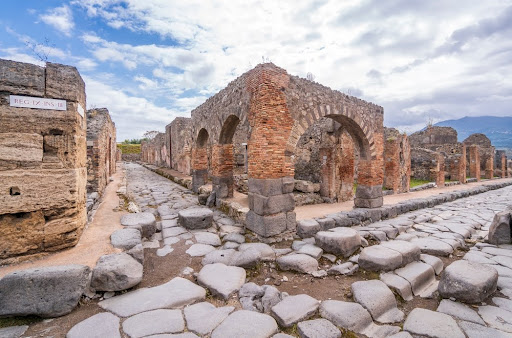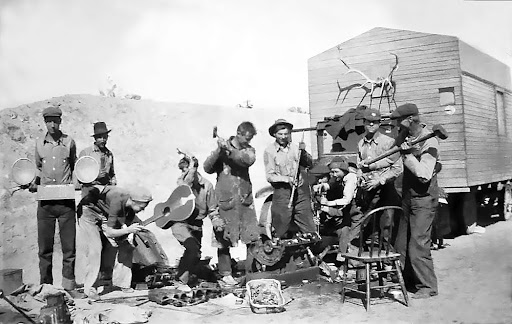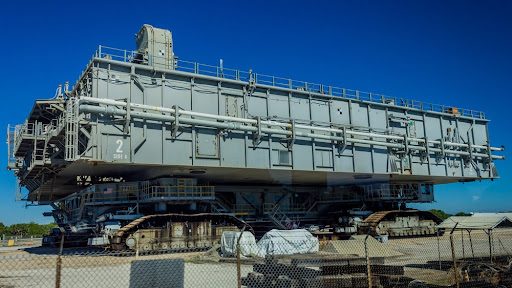Moving is an integral part of human history, shaping cultures, economies and even landscapes. From ancient migrations to modern marvels of logistics, here are some of the most fascinating relocations throughout history and how they parallel moving practices today.
1. Expansion of the Roman Empire
The Roman Empire wasn’t just about conquering lands; it was about relocating people. Soldiers, administrators and settlers moved into newly conquered territories, bringing Roman culture, infrastructure and governance with them.
- How They Did It: Roman legions and civilians transported supplies, household goods and even livestock using an extensive network of roads and waterways. Soldiers often carried personal belongings on foot or via carts.
- Modern Parallels: Today’s interstate moving trucks follow a similar concept—utilizing highways and efficient routes to ensure timely delivery of belongings.
- Fun Fact: Roman roads were so well-engineered that many of them are still in use today, either as modern highways or historical paths. These roads were critical for efficiently moving troops, supplies and settlers.
- Takeaway: The infrastructure developed during the Roman Empire set the standard for organized relocations and logistical planning.
2. Polynesian Oceanic Relocation
Centuries before GPS, the Polynesians mastered navigation to relocate across vast stretches of ocean. Using outrigger canoes and their deep knowledge of stars, wind and waves, they moved entire communities to islands like Hawaii, Tahiti and New Zealand.
- Why They Moved: The Polynesians sought new lands for settlement and resources, carrying food, plants and animals aboard their vessels.
- Inspiration for Today: This story reminds us that even large-scale moves can be accomplished with resourcefulness and planning—qualities essential in any long-distance move.
- Fun Fact: Polynesians transported live plants like taro and breadfruit aboard their canoes using portable gardens.
- Takeaway: This early form of sustainability shows that planning ahead for long relocations is key, whether it’s packing essentials or arranging meals en route.
3. The Pilgrims and the Mayflower
The Pilgrims’ move from England to the New World was one of history’s most famous relocations. Traveling aboard the Mayflower, they endured a 66-day journey across the Atlantic with limited belongings.
- What They Packed: Essential tools, seeds and personal items filled their ship, leaving little room for luxuries.
- A Lesson in Downsizing: Today’s moving guides often recommend decluttering before a move—an approach the Pilgrims would have embraced.
- Fun Fact: The Pilgrims originally intended to land in Virginia but ended up in Massachusetts due to stormy weather and navigational challenges.
- Takeaway: Sometimes, moves don’t go exactly as planned, but adapting to new circumstances can lead to unexpected opportunities.
4. The Great Migration West
During America’s expansion in the 19th century, pioneers packed their lives into covered wagons and headed westward. The Oregon Trail became a route for settlers seeking land and opportunity.
- Challenges They Faced: Long distances, rough terrain and limited resources made these moves grueling. Belongings were limited to what could fit in a wagon.
- Modern-Day Relocation: Imagine having to plan a move with no professional movers or moving trucks—just you, your family and a wagon. Today, professional moving services simplify even the most complex relocations.
- Fun Fact: Some pioneers placed wheels under their log cabins and pulled them westward with oxen, moving their entire homes instead of rebuilding from scratch.
- Takeaway: The original “mobile homes” prove that creativity can make even the toughest moves more manageable.
5. The Dust Bowl Migration
The 1930s brought one of the largest internal migrations in U.S. history. Families affected by drought and economic hardship fled the Dust Bowl states for California to find work and a fresh start.
- How They Moved: Families often converted old cars into makeshift moving trucks, piling them high with mattresses, furniture and personal belongings.
- A Symbol of Resilience: These moves highlight the human spirit’s drive to survive and adapt.
- Fun Fact: Migrants from the Dust Bowl states were often nicknamed “Okies,” a term that initially carried negative connotations but later became a symbol of resilience and determination.
- Takeaway: Even in tough times, moving offers the promise of starting fresh and building a better future.
6. The Advent of Moving Trucks: Revolutionizing Relocation
The 20th century saw the invention of moving trucks, transforming how people relocated. Early trucks were simple, but they made it possible to move large quantities of furniture and belongings quickly and efficiently.
- Why It Matters: Before moving trucks, most relocations involved carts or railways, which were time-consuming and limited in capacity.
- Evolution of the Industry: Today’s moving trucks feature GPS tracking, climate control and secure, padded cargo holds to ensure smooth and safe moves.
- Fun Fact: The first moving truck was essentially a converted horse-drawn carriage. It featured a rudimentary suspension system to protect fragile items.
- Takeaway: Innovation in transportation has come a long way, and today’s moving trucks are designed for efficiency and safety.
7. Transporting the Mona Lisa During WWII
During World War II, the Mona Lisa was relocated from the Louvre to various safe locations to protect it from Nazi looters. Packed in a custom crate, it was transported in utmost secrecy and care.
- Lessons for Today: This historical move underscores the importance of proper packing and specialized services—especially when dealing with precious or fragile items.
- Fun Fact: During its wartime relocations, the Mona Lisa was hidden in a series of unmarked trucks to avoid detection. At one point, it was stored in a castle in the French countryside.
- Takeaway: Proper packing, secrecy and security measures are essential when moving priceless possessions.
8. NASA’s Rocket Moves: Relocating Space Giants
Moving doesn’t get much bigger—or more precise—than transporting NASA’s rockets. Specialized vehicles, like the crawler-transporter, were designed to carry rockets from assembly buildings to launch pads.
- The Challenge: These “moves” required extreme care, traveling at speeds of less than one mile per hour to ensure stability.
- What It Taught Us: Even the largest, most complicated relocations are possible with careful planning and the right equipment—something moving companies excel at today.
- Fun Fact: NASA’s crawler-transporters weigh about 6 million pounds each and burn approximately 150 gallons of diesel per mile.
- Takeaway: Plan ahead. Even if you have to move slowly, you can accomplish your move by setting a realistic timeline.
9. The Silicon Valley Boom
The late 20th century saw a surge of relocations to California’s Silicon Valley as the tech industry exploded. Young professionals packed up and moved for job opportunities and the allure of innovation.
- Moving Trends: Many professionals relied on cross-country moving companies to transport their belongings efficiently, allowing them to focus on settling into a fast-paced environment.
- Impact Today: Silicon Valley’s legacy continues to attract movers, underscoring how relocation shapes industries.
- Fun Fact: Some of the earliest tech startups operated out of garages in Silicon Valley. Movers helped transform these humble spaces into billion-dollar businesses by relocating critical equipment.
- Takeaway: Relocation isn’t just about homes; it can also be the first step toward innovation and success.
10. Napa, California Hospital Relocation
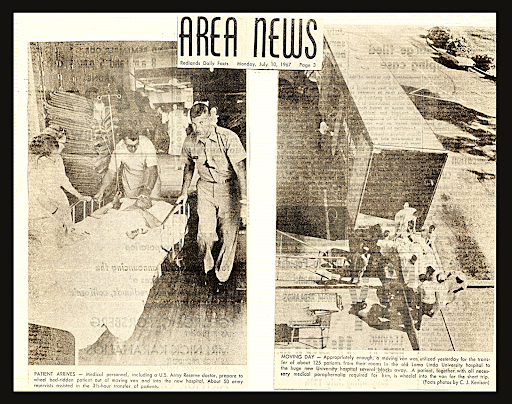
In 1967, one of our very own Wheaton affiliates, Turner Moving & Storage, helped move 125 patients from the preexisting Loma Linda hospital to the newly built University hospital several blocks away.
- Extreme Logistics: Many patients had to be moved alongside the medical equipment used to monitor and maintain them.
- Fun Fact: It took 50 army reservists three and a half hours to complete the transfer.
- Takeaway: A good moving company always rises to the challenge. No matter if you have to get from A to B, Wheaton is ready to help. From homes with valued heirlooms to businesses with delicate equipment, our team ensures your move goes smoothly.
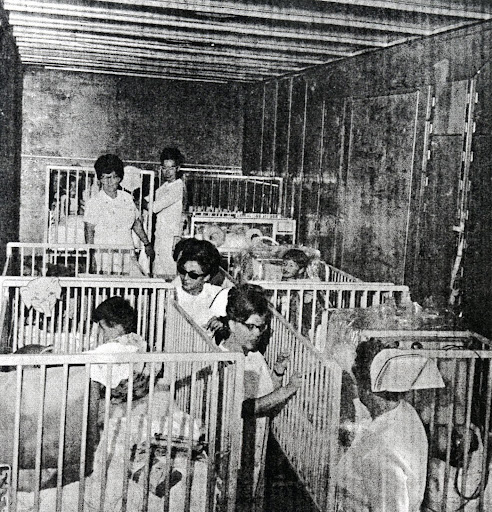
Plan Your Move with Wheaton
From the ancient Romans to NASA’s rocket movers, history shows us that relocation has always been a complex, yet essential, process. Today, even the most daunting move can feel like a breeze with the advanced tools used by a modern moving company like Wheaton.
Whether you’re relocating a small apartment or a large business, Wheaton has the means to move you. Contact us for a free estimate that’s tailored to your needs.

